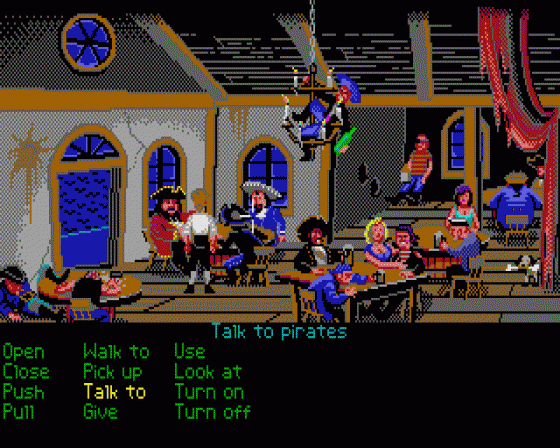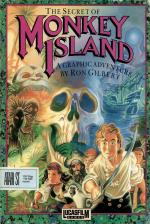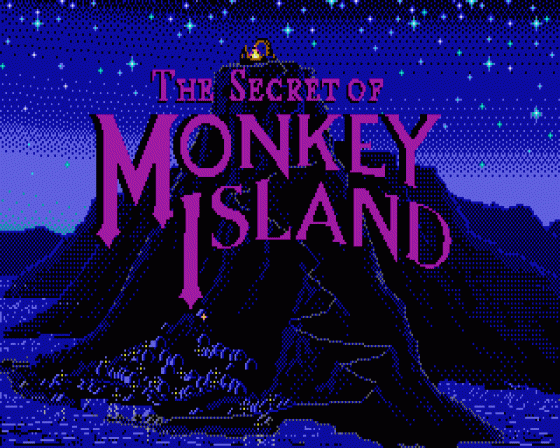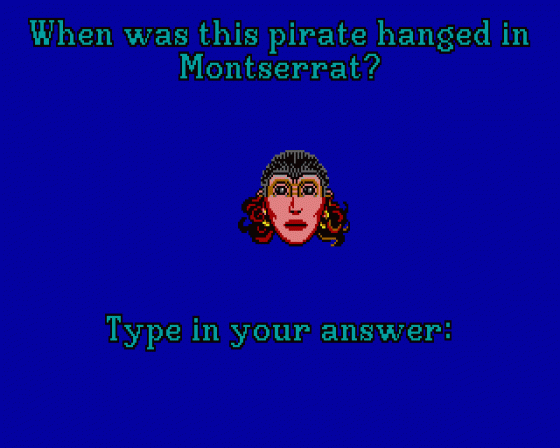
ST Format
 1st July 1991
1st July 1991
Categories: Review: Software
Author: Andy Hutchinson
Publisher: Lucasfilm
Machine: Atari ST
Published in ST Format #23
The Secret Of Monkey Island
Pirate wanted: Must be enthusiastic, naive, short, one-legged and capable of swigging back flagons of inebbriating grog with extreme gusto. Andy Hutchinson volunteers for the job and attempts to unravel the grisly - some might say shocking - secrets of Monkey Island
Lucasfilm have something of a reputation for producing games that look great, play well, and yet lack that magic ingredient which leads to sleepless nights and square eyes. However, they're not a company to let things stay as they are. The Secret Of Monkey Island represents a major rethink of the graphic adventure genre.
The adventure starts by a lookout at a well known pirate's hang-out known as Melee Island. You, as Guybrush Threepwood, stroll into the game and find a wizened old man staring out to sea and keeping watch over the island. This is all very well until you realise that the lookout is, in fact, totally blind.

You tell the lookout that you want to be a pirate. Rather than laughing in your general direction, he advises you to stroll down to the village hostelry called, appropriate, the Scumm bar. He then advises you to speak to the inebriated pirates propping up the bar.
After you find the bar and some suitably "official" looking pirates, they inform you that in order to become a pirate you're going to have to complete three tests. The first of these is to prove your skill as a swordsman by beating the island's Swordmaster. The second involves stealing an idol from a high security mansion and the third has you finding the infamous treasure of Melee Island.
This is where the adventure really begins. You soon realise that your three tests merely make up one of four main sections of the game. As soon as you think you've solved a section, another one arises which needs a quick and clever solution.

You control Mr. Threepwood by using the mouse. As you wander about, you can interact with the scene shown in the upper portion of the screen. In the lower half you find your inventory and the control phrases. Just below the graphics, you can also see a single line - this is where all your command phrases appear when you need them.
To make your character walk somewhere, you simply click on the "Walk to" icon and then on a position on the screen. So if you're in a room and you want to climb down some stairs you simply click on "Walk to" and then on the stairs. In this way you can get about the island with the minimum of fuss and bother.
You can also interact with any of the objects you see in the room, but only if they appear in the command description line. As a result, you can quickly work out what's of importance in a room by scanning your cursor around the screen.

You can look at, pick up, open or close, turn on or off, or give any of the items you find on your quest. When you speak to someone, the command phrases disappear and four speech options take their place. So, for example, if you've just met a rough looking pirate you can say, "Hi. Don't these roads all look the same,", "Prepare to die," or "I must be on my way".
To solve the puzzles you must pay attention to every detail. At first, some of the objects you pick up on the way seem to be useless. Within any major problem - trying to become a pirate for instance - there are, literally, hundreds of aggravating smaller puzzles to keep you occupied.
For example, in the first stage of the game you need to get a prisoner out of jail. You've already discovered that the Pirates' drink (grog) is highly caustic. The obvious thing to do is to pour grog on the cell door and get the prisoner out that way. Unfortunately, the grog keeps melting the pewter mugs. The answer? If you use your noggin, it's simple. You have to use several pewter mugs, pouring the contents from one to the other as they approach meltdown. It'e easy when you know how.
Effects

Stunning. At times, when you're watching the cartoon-like scenarios unfold, you'd swear you were watching a movie. Rather than plumping for one particular perspective, Guybrush wanders i and out of the landscape from many different angles.
Each scene or view is lovingly created and the backdrops ooze detail. It's this which sets Monkey Island apart from the competition. Pirates stroll around the town, birds swoop in and out of the scenes and the sun glistens on the horizon. The animation is also excellent. When you go into the distance, for instance, Threepwood gets smaller and smaller. This gives a real impression of landscape depth. Even so, when there is a lot of colour cycling on-screen - next to a waterfall for instance - you do tend to slow down to more of a leisurely stroll.
Sound consists mainly of a number of "theme" tunes or motifs for different sections of game. As you wander around the island of Melee, for example, a suitably jolly tune plays, while on ghost pirate LeChuck's boat, a sea shanty plays. The tunes are a bit wearying, but there's always the volume control if you get fed up.
Verdict

Show-stopping games are few and far between but Monkey Island is definitely one of them. You can't fail to be struck by the attention to detail in this lavish game. What really raises it above other graphic adventures though is the superb quality of the humour.
In a computer game, humour is not normally terribly good. Monkey Island fights the trend - it's really, really, really funny. Everything from ghost pigs to a talking tattoo called Roger, lifts the game and makes it a joy to play.
There is no better entry into the world of the graphic adventure than Monkey Island - there's something here for everyone. Kids are going to love the funny and attractive graphics and experienced adventurers are going to enjoy working out how you get a six foot banana picker through a two foot hole. It's lush and intense and I'm sorry I've finished it.

















